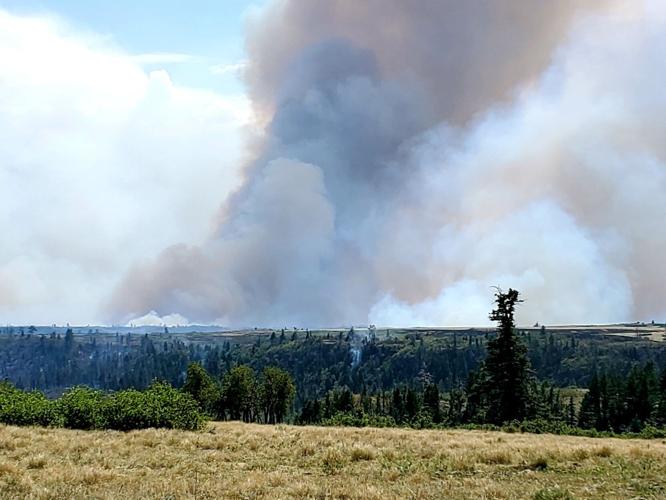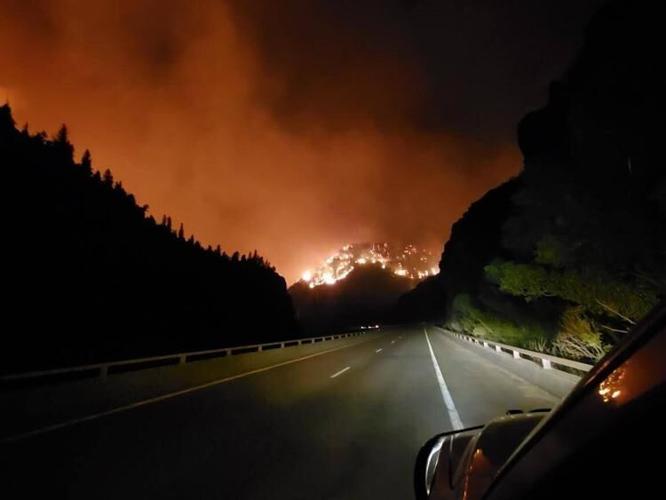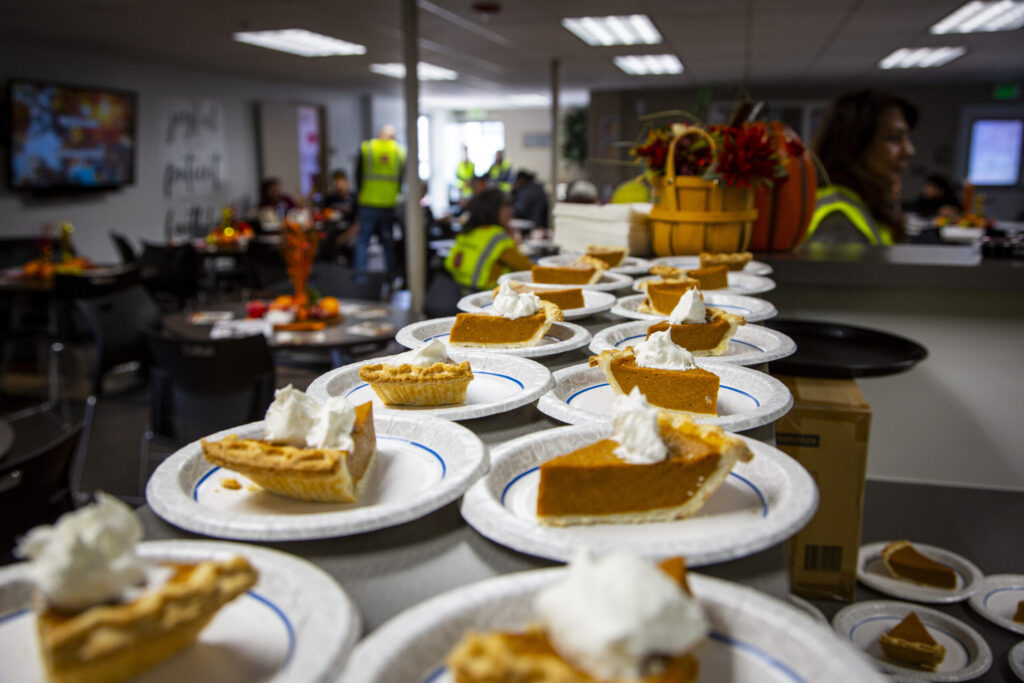Colorado Wildfires | A look at the fires burning in the state
Here’s a look at wildfires burning in Colorado:
Pine Gulch fire
Acres/Location: 139,006 acres/18 miles north of Grand Junction
Containment: 77%
Started: July 31, lightning
Firefighters: 753

The giant fire started by lightning on July 31 in a remote area north of Grand Junction quickly got out of control and has since grown to the largest wildfire in Colorado history as it races through grass, sage, pinyon-juniper and fir. The combination of drought, dry vegetation, unseasonably hot weather and steep terrain led to several weeks of explosive growth. In one night, the fire grew by 30,000 acres. As of Friday, it was estimated at 139,006 acres, surpassing the 138,114-acre Hayman fire in 2002 as the state’s largest.
Despite its massive size, only one abandoned building has burned and no injuries have been reported. Containment has increased to 77%.
With resources in the West stretched thin, fire managers have begun drawing down the number of firefighters battling the Pine Gulch fire. On Friday, there were 753 firefighters, about 150 fewer than the 915 on Thursday.
The weather also has become an ally, with rain and lower temperatures through the weekend after weeks of 90-degree days and high winds. A cold front expected to arrive Monday could bring a return of 30 mph winds.
Grizzly Creek fire
Acres/Location: 32,464 acres/Glenwood Canyon
Containment: 73%
Started: Aug. 10, human caused
Firefighters: 644
Firefighters doused edges of the fire with helicopter water drops and strengthened fire lines with hand tools and dozers.
As containment increases, crews will shift their efforts to landscape repairs.
Interstate 70 could see intense rain, mudslides and rockfall over the weekend. The hazardous weather forecasts coupled with power pole repairs could create delays and intermittent closures along Intestate 70.
The road reopened between Gypsum and Glenwood Springs on Monday after days of closures while the fire burned just off the shoulder. Drivers are encouraged to exercise care and drive slowly.
Officials predict the fire will be fully contained by Sept. 18.
RELATED:
– Fire reported near Bishop Castle; pre-evacuation order issue for Willis Creek fire
– Poor air quality in Pikes Peak region ‘incredibly rare,’ Colorado meteorologist says
– Ash raining down on Colorado a sign of hotter, drier and more dangerous fire seasons
–Grizzly Creek fire increases flood risk in Glenwood Canyon
–Gov. Polis activates National Guard to assist with wildfire response
Williams Fork fire
Acres/Location: 12,097 acres/seven miles southwest of Fraser in the Arapaho and Roosevelt National Forests
Containment: 10%
Started: Aug. 14, human caused
Firefighters: 396
The Williams Fork fire is burning on the Arapaho and Roosevelt National Forests and Pawnee National Grassland seven miles southwest of Fraser. The human-caused fire started near the Henderson Mill Aug. 14 and quickly grew due to high winds and steep slopes. Local firefighters immediately responded, but hot, dry and windy conditions allowed the fire to race through the timbered crowns of the lodgepole pine, fir and aspen forest.
The fire’s spread has slowed in wetter, cooler weather. Crews and equipment are shifting to the east side of the fire area to construct containment lines around private land and the Fraser Experimental Forest.
Cameron Peak fire
Acres/Location: 23,007 acres/West of Fort Collins, Arapaho and Roosevelt National Forests
Containment: zero percent
Started: Aug. 13, unknown cause
Firefighters: 742
The Cameron Peak fire ignited on Aug. 13 on the Arapaho and Roosevelt National Forests near Cameron Pass and Chambers Lake. It is burning in heavy timber stands over rugged terrain. Hot, dry, windy weather, combined with critically dry fuels have kept firefighters from slowing its spread.
Rainstorms, higher humidity and lower temperatures should aid firefighters this weekend.
Thorpe fire
Acres/location: 159 acres/Pike and San Isabel National Forest, west of Lake George.
Containment: 100%
Started: 1 p.m. Aug. 23, unknown cause
Firefighters: 24, three helicopters, three large air tankers, one very large air tanker.
The Thorpe Fire started on Aug. 23 The fire is 159 acres and 100% contained with 24 personnel assigned as of Saturday. The fire was burning through grassy underbrush with occasional single tree torching of ponderosa pine timber. The Webber Park community, north of the fire, was evacuated on Aug. 23. The evacuation notice was lifted on Aug. 24. All road closures have been lifted; however some roads may be temporarily closed due to firefighting operations. The cause of the fire is still under investigation.
East Fork fire
Acres/location: 2,842 acres/11 miles southeast of Trinidad
Containment: 17%
Started: Aug. 22, lightning
Firefighters: 55
The fire is burning on two state wildlife areas near the New Mexico border: James M. John State Wildlife Area and Lake Dorothey State Wildlife Area. Winds pushed the fire to the south toward the Colorado/New Mexico border, resulting in the evacuation of Sugarite Canyon State Park in New Mexico. The park is located on the Colorado–New Mexico state line 6 miles northeast of Raton, N.M. Although the fire remains in Colorado, a watershed near Raton is threatened and has seen some impact above Lake Dorothey.
East Fork fire. Courtesy of Colorado Department of Public Safety.






















